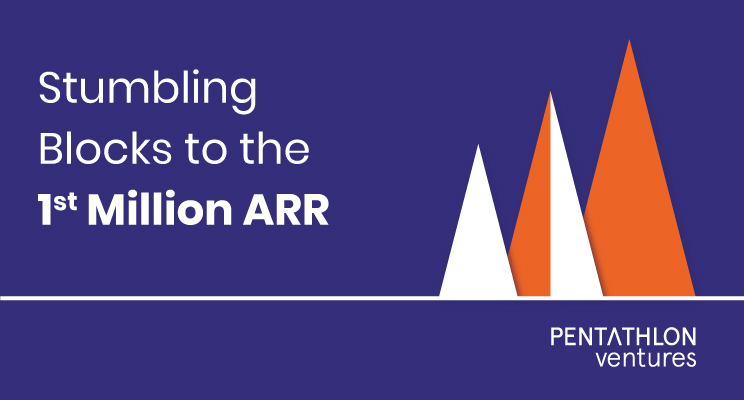“How fast should a start-up get to 1 Million ARR?”
A great question – not asked often enough. When it is, the answer is usually ‘as fast as possible’.
‘As fast as possible’ isn’t the wrong answer, but it’s not an answer that helps a SaaS entrepreneur in any way.
The real question
Getting to that first million in ARR is considered a major milestone for a start-up. Founders and investors alike use it as one of the measures of success.
Getting to 1 Million in ARR is supposed to be a sign that you have achieved some level of product-market fit. That you have figured out what the market needs, what they’re ready to pay, and how to deliver at scale.
So, the real question is, how fast can you achieve product-market fit and prove it with your 1 Million ARR? What are things to watch for to achieve a faster 1 Million Dollar ARR?
The most common stumbling blocks
1) Customer churn.
Churn is always the trickiest hurdle to cross for a SaaS start-up. Revenue Growth is very important but so is churn. If left unchecked, revenue growth and churn eventually just cancel each other out. When it comes to churn, even a small improvement has a remarkable effect on revenue stacking.
Founders tend to forget that retention trumps acquisition. If your current customers are unhappy, bringing in new customers is like putting a band-aid on a bullet hole. As a founder, you want to feel like you’re climbing stairs, not running on a treadmill.
2) Not Listening to your customers.
Making quick changes to the product (agility) based on customer feedback is very important. You should pay equal attention to everyone’s feedback, but then you need to prioritise whose feedback you actually act upon. It’s also a good practice to conduct a post-mortem after every version releases. This helps you see how one customer’s feature request resonates across your customer base.
3) Thinking that you’ll sell just because you’re cheaper and better.
Under-pricing with the hope that it will accelerate initial customer adoption is a common mistake. Customers don’t always perceive cheaper as better. Enterprise customers, especially, don’t always appreciate free tiers and cheap solutions. You need to be competitive, but still price according to the value you deliver. If we undervalue ourselves, why will the customer act any different?
4) Underestimating the product development resource needs.
Teams are often understaffed or short-skilled to build the product they envision. As founders, everyone at Pentathlon has lived through and understands the challenges of acquiring tech talent, but the product roadmap and the talent roadmap have to make sense together.
5) Not measuring enough metrics often enough.
This is important for SaaS start-ups. There are a lot of SaaS metrics. You need to pick the ones that make sense in your scenario and measure them regularly. Some key ones are CAC (Customer Acquisition Cost), ACV (Annual Contract Value), Revenue Efficiency, Growth Rate, and Churn. A lot of founders we interview tend to skip metrics when they find it tough to gather data.
6) Waiting for customers to find you.
Building a superb product and then just waiting for customers to come searching for you is like wasting potential energy. Build like a SaaS company, sell like a services company. You need to use the right marketing channels to reach your prospects and generate leads. Build a business development engine, strong sales, and nurturing processes.
7) Cash management.
Cash is the king. You need to use capital efficiently and avoid any unnecessary expenses. Use open source/free tools wherever possible, estimate development costs correctly, keep the office simple. Yes, you don’t want to be over-cautious, but some financial prudence is important, or you’ll just run out of cash at the wrong time.
Remember, avoiding the ‘common’ stumbling blocks doesn’t mean you won’t make ‘uncommon’ mistakes, so sleep with one eye open for factors that can derail your growth.




